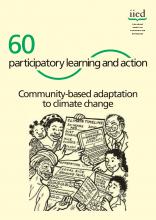Geographic information systems in wildlife management: a case study using yellow-eyed penguin nest site data

Island and Ocean Ecosystems
Available Online
Clark Ryan D
,
Mathieu Renaun
,
Seddon Philip J
2008
This report provides a comprehensive yet simple guide to the construction and use of a Geographic Information System (GIS) for collating, analysing, updating and managing data in wildlife management or research projects. The spatial analysis of yellow-eyed penguin (hoiho, Megadyptes antipodes) nest site data from Boulder Beach. Otago Peninsula, is used as an example. The report describes the key components used in the construction of the GIS, which included aerial photography, a digital elevation model and habitat map of the study area, and nest site data collected at Boulder Beach between 1982 and 1996. The procedures for estimating the geographic locations of nest sites using historical hand-drawn sketch maps are also described, demonstrating the potential for incorporating and analysing historical datasets in this type of GIS. The resulting GIS was used to conduct simple spatial analyses of some of the characteristics of yellow-eyed penguin nesting habitat selection, as well as the densities of nest sites in each type of nesting habitat at Boulder Beach. The sources of error, uncertainty and other limitations of this and other GIS arc described, along with procedures and steps to minimise and avoid them. The yellow-eyed penguin GIS described in this report provides an example of the potential utility of GIS in ecological research and management of both yellow-eyed penguins and many other species.







